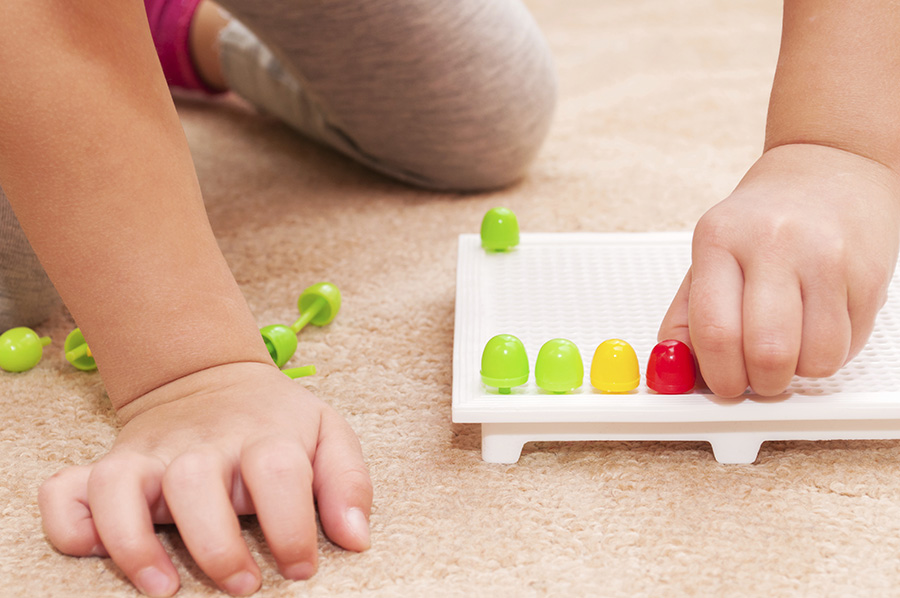
‘Developmental Co-ordination Disorder (DCD), also known as Dyspraxia, is a common disorder affecting fine or gross motor co-ordination in children and adults. This condition is formally recognised by international organisations including the World Health Organisation. DCD is distinct from other motor disorders such as cerebral palsy and stroke. The range of intellectual ability is in line with the general population. Individuals may vary in how their difficulties present; these may change over time depending on environmental demands and life experience and will persist into adulthood. An individual’s co-ordination difficulties may affect participation and functioning of everyday life skills in education, work and employment.’ Adopted by Dyspraxia DCD Ireland from Movement Matters, (2012)
Students diagnosed with DCD find it exceptionally difficult to acquire the movement skills that are expected of them in everyday life and are often referred to as ‘clumsy’. Such students do not suffer from any known neurological condition and their difficulties are not explicable in terms of a generalised delay in development. Students may have difficulty co-ordinating their movements, perceptions and thoughts. They exhibit difficulty with everyday tasks such as buttoning shirts and using a knife and fork, and may confuse left and right.
In school, activities such as writing, Visual Arts, and Physical Education may pose problems. In play, difficulties may be observed in tasks such as running, jumping, hopping and catching a ball. In the classroom, the student may bump into and drop things and tend to find drawing and writing difficult. It is often difficult for the student to maintain erect posture, either when sitting or standing, and the effort expended on this can be considerable, giving rise to fatigue. Students may also need to prop up their bodies with their arms, which may cause problems when they have to write. This difficulty may also result in students being fidgety or exhibiting a tendency to lie across the desk.
Some students have additional speech problems, others are distractible and show an inability to organise their behaviour. Students may also have poor spatial awareness. Students have difficulty with self-help and organisational skills and may find it difficult to remember what equipment is needed for particular activities and typically will mislay their belongings at school. Students may have an inability to recognise potential dangers (e.g. using Bunsen burners and other equipment in science and technology subjects). At home they may be untidy and slow at tasks that require fine-/gross-motor skills.
Often students may appear to have a lot of information but are unable to record that information in a logical and meaningful order. Their written work does not match their apparent verbal ability. These difficulties can lead to frustration and problems with self-esteem, which can further lead to either withdrawn behaviour or disruptive behaviour.
Strategies for Learning and Teaching – Developmental Co-ordination Disorder
Structure the classroom environment to minimise the possibility of furniture/fittings causing a problem for the student. Ensure seating allows the student to rest both feet on the floor with the desk at elbow height and with the additional option of a sloping surface. Position the student where he/she has a direct view of the teacher. Provide an uncluttered personal workspace for the student.
- Directly teach organisational skills through making lists, sequencing events and using timetables
- Provide an alternative means of recording work (e.g. computer/specifically differentiated worksheets)
- Break down assignments into smaller components.
- Avoid giving more than one worksheet at a time and allow for the worksheet to be attached to the desk when a writing implement is being used (e.g. tape or clip paper to the desk, or use a non-slip mat under the copybook to stop it slipping)
- Fold worksheets in half and have the student come up to you when the first half is completed and allow the student a break before continuing with the work.
- Ensure homework tasks are understood and not too onerous.
- Limit copying from the black/white board and use highlighters to chunk information in texts.
- Be aware that growth spurts at particular phases of development may intensify problems for the student.
- Provide clear and unambiguous instructions and check that the student understands what is required of him/her.
- The student with DCD may find it difficult to multi-task (e.g. tie a shoelace and follow directions simultaneously). Consider this when giving directions/instructions.
- Use visual supports in implementing the curriculum.
- Consider using stopwatches or timers to develop an awareness of time.
- Give as many cues as possible. Use visual demonstration and verbal instructions to reinforce teaching.
- Place students at the front of the classroom so they can hear instructions clearly and copy from the board easily.
- Keep the environment as predictable as possible to allow students time to plan their actions and avoid anxiety.
- In Physical Education make participation and not competition the goal.
- Encourage a partner/buddy relationship with another student or other students.
- Provide praise and encouragement and reward effort as well as the final product.
- Thicker pencils, pencil grips or pencils with triangular barrels may be easier for the student to hold. Pencils with soft leads are also easier to move. Ask the student what he/she prefers to write with. For students with shaky hand movements or tremors use a heavy, weighted pencil.
- If a student presses too hard with the pencil allow him/her to practise writing with a towel under the page.
- If a student writes very lightly allow him/her to practise writing using carbon paper.
- Use grid paper to prompt students to leave a space between words.
- Allow the student to stop if he/she is tired.
- Encourage older students to do rough drafts in order to organise their work.
- To specifically develop hand skills allow the student to manipulate play dough, pop Bubble Wrap, squeeze clothes pegs, scrunch paper, squirt water pistols, wring out a wet sponge, stretch rubber bands, construct toys, rip up pieces of paper, etc.


